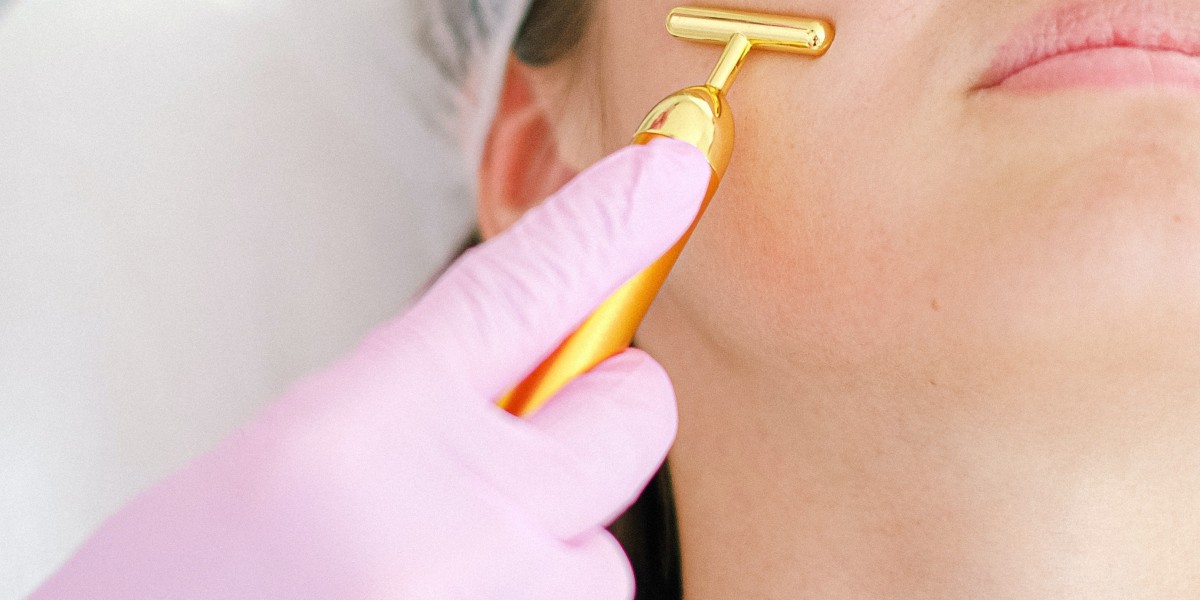These fine lines and deeper furrows can be a source of concern for many, prompting the search for effective anti-wrinkle treatments. The field of dermatology and cosmetic science has evolved significantly, offering a plethora of treatments to combat the signs of aging. This article delves into the various types of anti-wrinkle treatments available, their benefits, potential risks, and considerations to help you make an informed decision.
Understanding Wrinkles
Wrinkles are creases, folds, or ridges in the skin that typically appear as people age. They are most commonly found on areas exposed to the sun, such as the face, neck, hands, and forearms. There are two main types of wrinkles: dynamic and static.
Dynamic Wrinkles
Dynamic wrinkles form from repeated facial movements, such as smiling, frowning, or squinting. Common dynamic wrinkles include crow's feet around the eyes, forehead lines, and frown lines between the eyebrows.
Static Wrinkles
Static wrinkles are present even when the face is at rest and result from the loss of skin elasticity and collagen over time. These can be exacerbated by factors such as sun exposure, smoking, and dehydration.
Types of Anti-Wrinkle Treatments
The beauty and dermatology industries offer a range of anti-wrinkle treatments, each with its own method of action, benefits, and potential risks. These treatments can be broadly categorised into topical treatments, minimally invasive procedures, and surgical options.
Topical Treatments
Topical treatments are the first line of defence against wrinkles and are often the least invasive option. They include over-the-counter products and prescription medications.
Retinoids
Retinoids, derivatives of vitamin A, are among the most effective topical treatments for wrinkles. They work by increasing cell turnover and stimulating collagen production. Common retinoids include tretinoin (Retin-A) and adapalene (Differin).
Peptides
Peptides are short chains of amino acids that can penetrate the skin and signal the production of collagen. Products containing peptides can help improve skin texture and reduce the appearance of wrinkles.
Antioxidants
Antioxidants such as vitamin C, vitamin E, and niacinamide protect the skin from damage caused by free radicals. These ingredients can help prevent the formation of new wrinkles and improve skin tone and texture.
Hyaluronic Acid
Hyaluronic acid is a powerful humectant that can hold up to 1,000 times its weight in water. It helps plump the skin, reducing the appearance of fine lines and wrinkles by keeping the skin hydrated and supple.
Minimally Invasive Procedures
Minimally invasive procedures offer more immediate and noticeable results compared to topical treatments. They are performed by dermatologists or cosmetic surgeons and typically involve little to no downtime.
Botulinum Toxin (Botox)
Botox is one of the most popular anti-wrinkle treatments. It works by temporarily paralyzing the muscles that cause dynamic wrinkles, resulting in smoother skin. Botox is particularly effective for forehead lines, crow's feet, and frown lines.
Dermal Fillers
Dermal fillers are injectable substances that fill in wrinkles and add volume to the skin. Common fillers include hyaluronic acid (Juvederm, Restylane), calcium hydroxylapatite (Radiesse), and poly-L-lactic acid (Sculptra). Dermal fillers can be used to treat static wrinkles, enhance facial contours, and add volume to areas such as the cheeks and lips.
Chemical Peels
Chemical peels involve applying a solution to the skin that causes the top layer to peel off, revealing smoother, younger-looking skin underneath. Peels can be superficial, medium, or deep, depending on the strength of the solution used. They are effective for treating fine lines, sun damage, and uneven skin tone.
Microdermabrasion
Microdermabrasion is a non-invasive procedure that exfoliates the outer layer of the skin using a special device. It helps improve skin texture, reduce the appearance of fine lines, and stimulate collagen production.
Microneedling
Microneedling involves using a device with fine needles to create tiny punctures in the skin. This stimulates the skin's natural healing process, promoting collagen and elastin production. Microneedling can improve skin texture, reduce wrinkles, and treat scars and hyperpigmentation.
Laser Treatments
Laser treatments use focused light energy to target specific layers of the skin, promoting collagen production and reducing wrinkles. Different types of lasers, such as ablative and non-ablative lasers, can be used depending on the patient's needs and skin type.
Surgical Options
For those seeking more dramatic and long-lasting results, surgical options may be considered. These procedures are more invasive and typically require longer recovery times.
Facelift (Rhytidectomy)
A facelift is a surgical procedure that lifts and tightens the skin and underlying tissues of the face and neck. It effectively reduces deep wrinkles, sagging skin, and jowls, providing a more youthful appearance. A facelift can be combined with other procedures, such as a brow lift or eyelid surgery, for comprehensive rejuvenation.
Brow Lift
A brow lift, also known as a forehead lift, raises the eyebrows and smooths forehead wrinkles and frown lines. It can also improve the appearance of sagging upper eyelids.
Blepharoplasty
Blepharoplasty, or eyelid surgery, removes excess skin and fat from the upper and lower eyelids. It addresses wrinkles, puffiness, and sagging around the eyes, giving a more refreshed and youthful look.
Benefits and Risks of Anti-Wrinkle Treatments
Benefits
Improved Appearance: Anti-wrinkle treatments can significantly reduce the appearance of wrinkles and fine lines, leading to a more youthful and rejuvenated look.
Boosted Confidence: Many individuals experience an increase in self-confidence and self-esteem after undergoing anti-wrinkle treatments.
Non-Surgical Options: Many effective treatments do not require surgery, offering minimal downtime and lower risk compared to surgical procedures.
Risks
Side Effects: Common side effects of minimally invasive procedures include redness, swelling, bruising, and discomfort at the treatment site. These are usually temporary and resolve within a few days.
Allergic Reactions: Some individuals may experience allergic reactions to certain ingredients in topical treatments or injectable fillers.
Infection: Any procedure that breaks the skin carries a risk of infection. It is essential to follow post-treatment care instructions and seek treatment from qualified professionals.
Uneven Results: There is a risk of uneven or unnatural-looking results, particularly with injectables and surgical procedures. Choosing an experienced practitioner can help minimise this risk.
Considerations When Choosing an Anti-Wrinkle Treatment
Skin Type and Condition
Different treatments are suitable for different skin types and conditions. It is important to consult with a dermatologist or cosmetic surgeon to determine the most appropriate treatment for your specific needs.
Desired Results
Consider the results you hope to achieve and the duration of those results. Some treatments offer temporary improvements, while others provide more permanent solutions.
Budget
Anti-wrinkle treatments can vary significantly in cost. Topical treatments are generally more affordable, while minimally invasive procedures and surgical options can be more expensive. It is important to factor in the cost when deciding on a treatment plan.
Recovery Time
Consider the amount of downtime associated with each treatment. Minimally invasive procedures typically require little to no recovery time, while surgical options may involve a longer healing period.
Practitioner’s Expertise
Choose a qualified and experienced practitioner to perform your treatment. Research their credentials, read reviews, and ask to see before-and-after photos of previous patients.
Advancements in Anti-Wrinkle Treatments
The field of anti-wrinkle treatments is continually evolving, with new technologies and techniques emerging. Some of the latest advancements include:
Combination Treatments
Combining different treatments can enhance results and address multiple signs of aging simultaneously. For example, combining Botox with dermal fillers can provide a more comprehensive rejuvenation.
Regenerative Medicine
Regenerative medicine, such as platelet-rich plasma (PRP) therapy and stem cell treatments, is gaining popularity for its potential to stimulate the body's natural healing processes and promote collagen production.
Advanced Laser Technologies
Newer laser technologies offer more precise and effective treatments with minimal downtime. Fractional lasers and picosecond lasers are examples of advanced devices that provide superior results for wrinkle reduction and skin rejuvenation.
Customised Skincare
Advancements in skincare formulation and personalisation allow for customised products tailored to individual skin needs. These personalised treatments can provide more targeted and effective results.
Conclusion
Anti-wrinkle treatments offer a range of options to address the signs of aging and restore a youthful appearance. From topical treatments to minimally invasive procedures and surgical options, there is a solution for everyone. It is essential to consult with a qualified professional to determine the most suitable treatment based on individual needs and goals. With advancements in technology and techniques, achieving smoother, younger-looking skin is more attainable than ever before.



